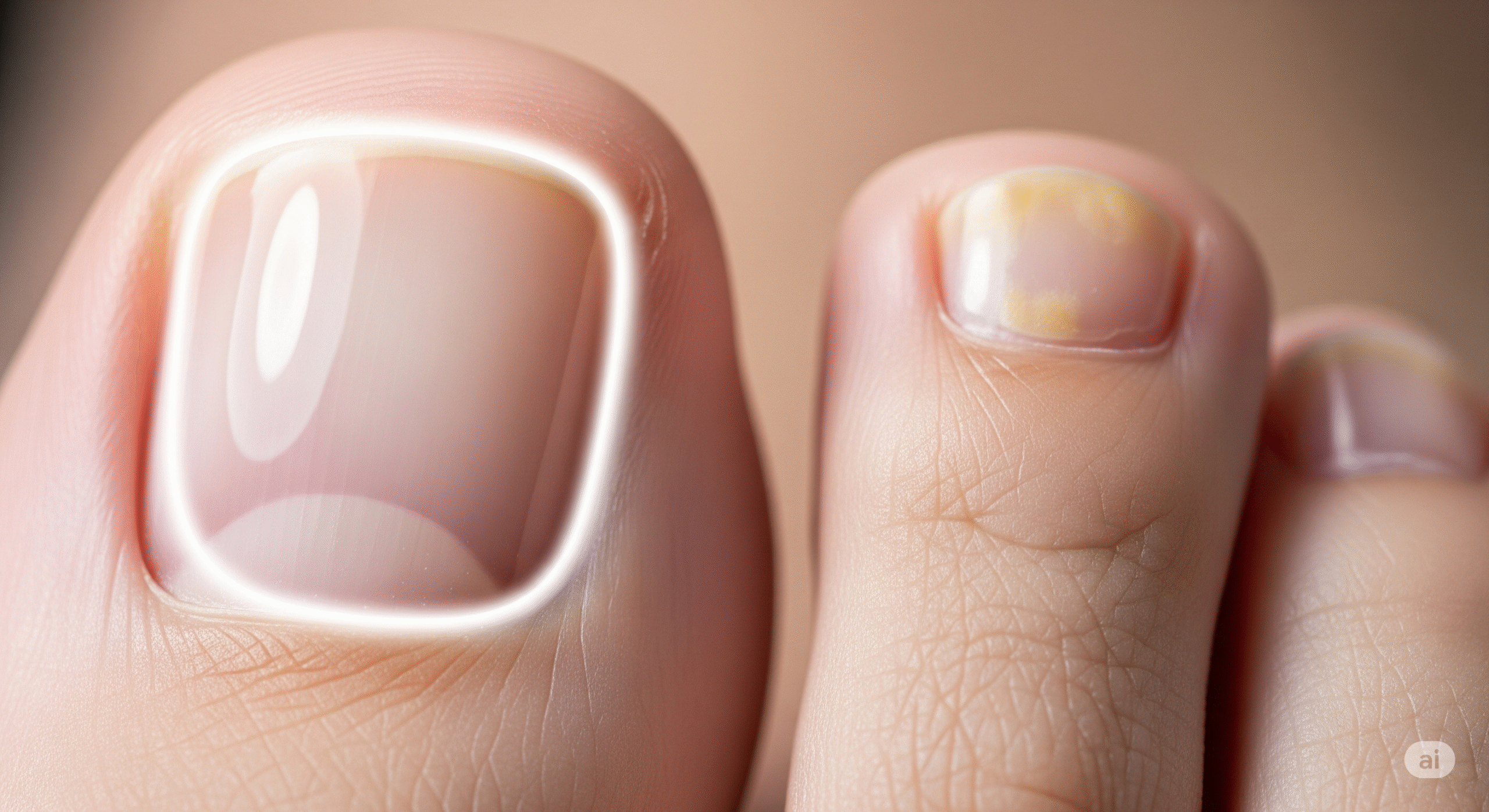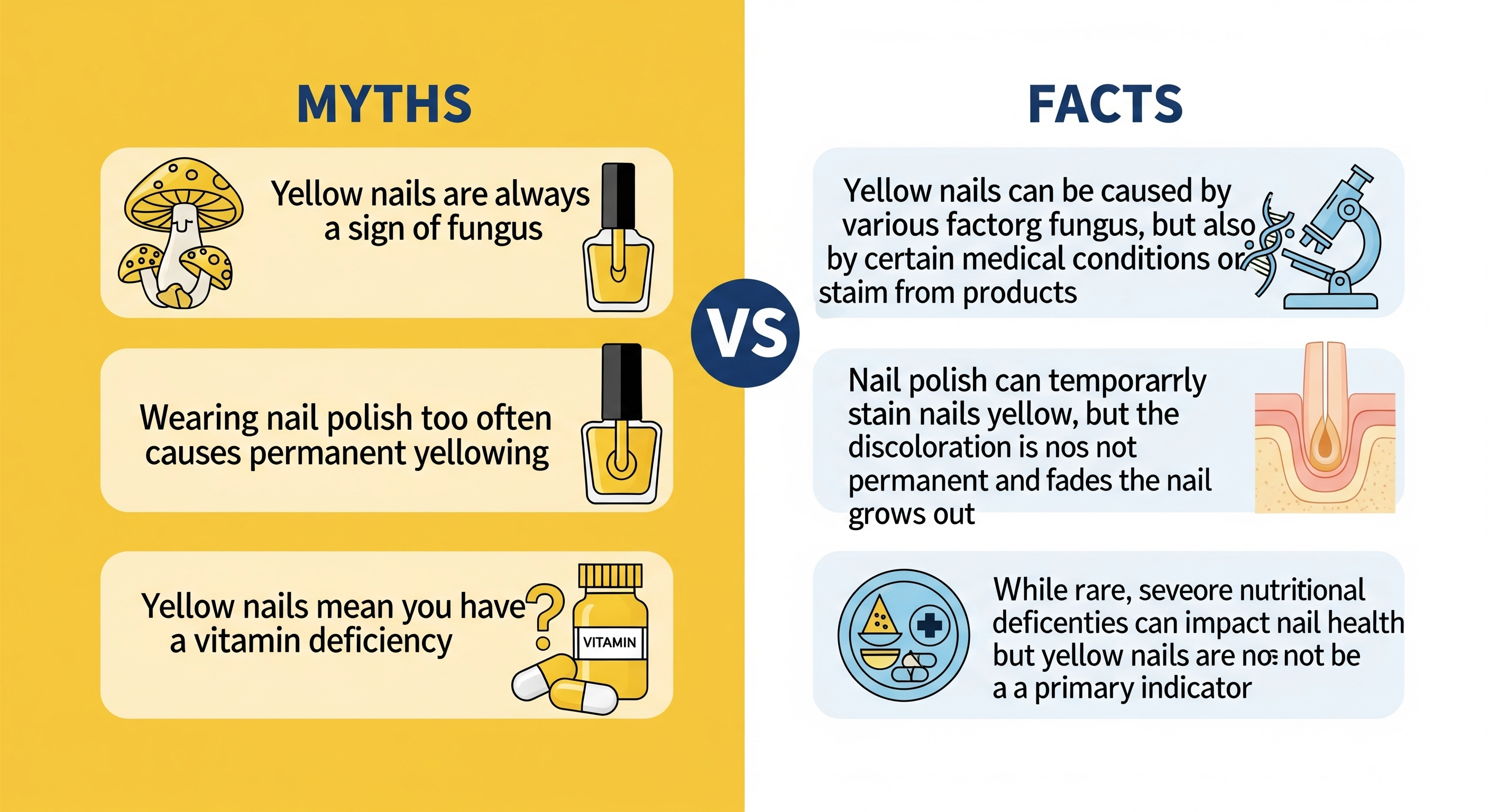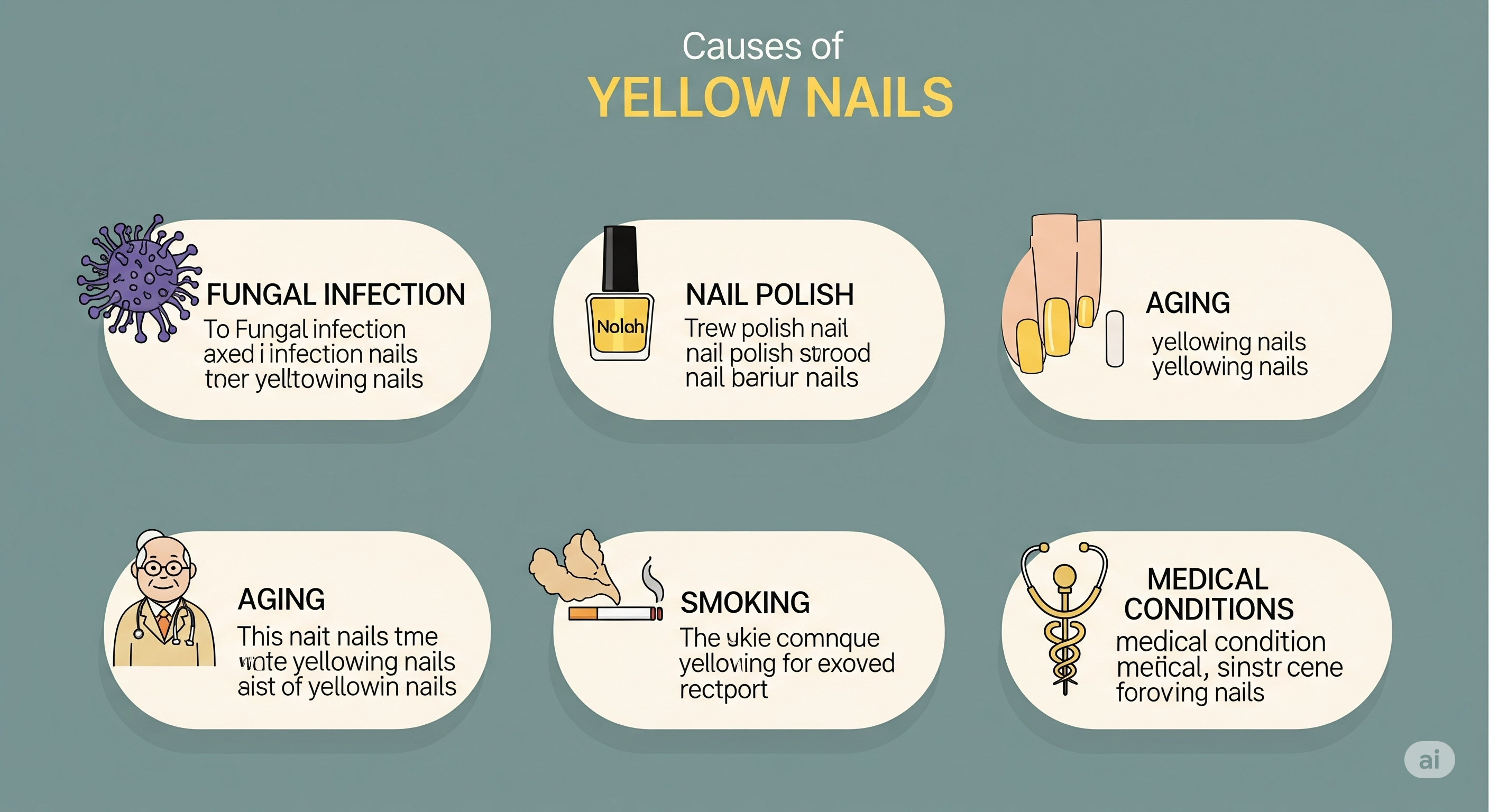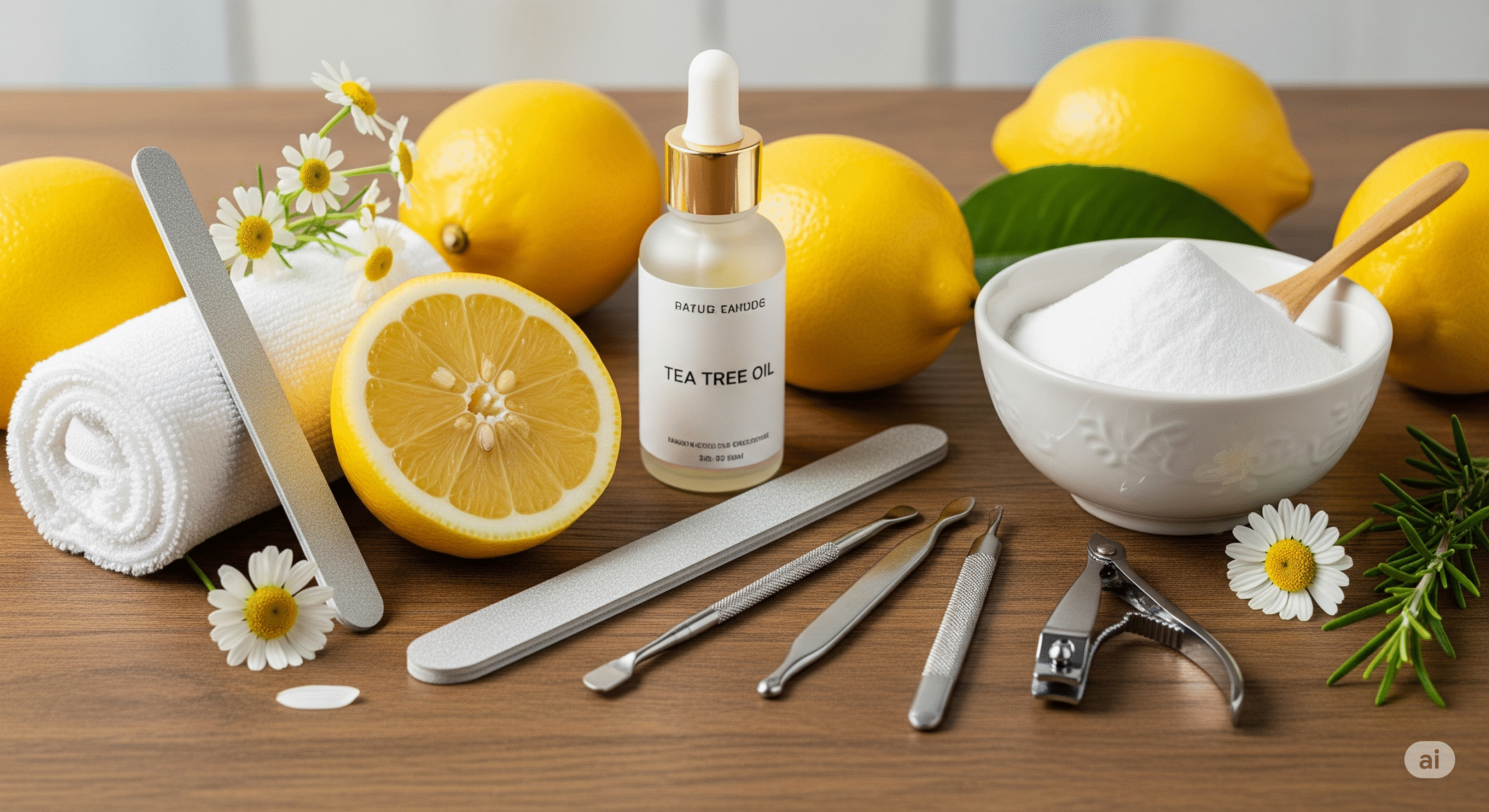Yellow Nail Myths Debunked
The Truth About Nail Discoloration

Yellow nails are a common concern that can cause embarrassment and discomfort, often leading to a flurry of self-diagnosis and ineffective home remedies. The internet is rife with misinformation, making it difficult to discern fact from fiction. While many immediately jump to the conclusion of a fungal infection, the truth is far more nuanced. Yellow nails can be a symptom of various underlying issues, ranging from benign cosmetic staining to more serious medical conditions. Understanding the real causes is the first step towards effective treatment and prevention. This comprehensive guide will debunk the most prevalent myths surrounding yellow nails, shed light on their true origins, and provide you with science-backed strategies to restore your nails to their natural, healthy state.
Common Myths About Yellow Nails
Let's address some of the most persistent misconceptions that often lead people down the wrong path when dealing with yellow nails.
This is by far the most common and misleading myth. While nail fungus (onychomycosis) is a frequent culprit behind yellow, brittle nails, it's not the only one. Other causes include prolonged use of dark nail polish without a base coat, aging, smoking, certain medications, and underlying medical conditions like diabetes, thyroid issues, or psoriasis. Assuming every yellow nail is fungal can lead to incorrect self-treatment and delay proper diagnosis and care.
The internet is full of anecdotal claims about using harsh chemicals like bleach or strong acids like vinegar to treat nail fungus. Not only are these methods largely ineffective against established fungal infections, but they can also cause severe irritation, chemical burns, and further damage to the nail and surrounding skin. Fungal infections require specific antifungal agents, and relying on unproven remedies can worsen the condition and prolong recovery.
While some cases of yellow nails are indeed cosmetic (e.g., from nail polish), persistent or worsening discoloration, especially when accompanied by thickening, crumbling, or pain, can indicate a more serious underlying health problem. Ignoring these signs can lead to complications, particularly for individuals with compromised immune systems or diabetes, where even minor foot issues can escalate rapidly.
Unfortunately, once a fungal infection takes hold, it rarely resolves without targeted intervention. While good hygiene is crucial for prevention and managing symptoms, it's insufficient to eradicate an established infection. Fungi thrive in warm, moist environments, and they embed themselves deep within the nail bed, making them notoriously difficult to eliminate without proper treatment.

The Real Causes of Yellow Nails
Understanding the actual reasons behind nail discoloration is crucial for choosing the right course of action. Here are the primary culprits:
This is the most common cause of yellow, thickened, and brittle nails. Fungal infections often start as a white or yellow spot under the tip of the fingernail or toenail. As the infection deepens, the nail may discolor, thicken, and crumble at the edge. It can affect one or several nails and is more common in toenails due to the warm, moist environment of shoes.
Dark-colored nail polishes, especially reds, oranges, and yellows, can stain the nail plate if a base coat isn't used. This is a cosmetic issue and usually resolves once the polish is removed and a break is given to the nails. The discoloration is typically uniform and affects all nails painted.
As we age, nails naturally thicken and can take on a yellowish hue. This is a normal part of the aging process and is generally harmless. However, it can sometimes be confused with fungal infections.
Nicotine and tar from cigarettes can stain fingernails and, less commonly, toenails, giving them a yellowish-brown tint. This is a direct result of exposure to the chemicals in smoke.
Several systemic health conditions can manifest as yellow nails, including:
- Diabetes: High blood sugar levels can affect collagen in the nails, leading to yellowing.
- Psoriasis: A chronic autoimmune disease that can affect nails, causing discoloration, pitting, and thickening.
- Thyroid Conditions: Both hyperthyroidism and hypothyroidism can sometimes cause nail changes, including yellowing.
- Lymphedema: A condition causing swelling, often in the limbs, which can lead to Yellow Nail Syndrome (a rare disorder characterized by yellow, thickened nails, lymphedema, and respiratory problems).
- Nutritional Deficiencies: While less common, deficiencies in certain vitamins (e.g., Vitamin B12) or minerals can sometimes contribute to nail discoloration.

Functional Home Tips for Managing Yellow Nails
While professional diagnosis is always recommended for persistent yellow nails, especially if you suspect a fungal infection or underlying medical condition, there are several home tips that can help manage cosmetic staining and support overall nail health. These methods are not substitutes for medical treatment but can complement it.

The Role of Targeted Supplements in Nail Health
While home remedies and good hygiene are important, for persistent yellow nails, especially those caused by stubborn fungal infections, a more targeted approach is often necessary. This is where specialized supplements can offer a significant advantage, working from within to support your body's natural defenses and accelerate the healing process.
Think of it this way: traditional topical treatments can be time-consuming, messy, and often struggle to penetrate the nail plate effectively to reach the root of the infection. Oral medications, while effective, can come with side effects. High-quality, targeted supplements, on the other hand, provide your body with the essential nutrients and compounds it needs to fight off the infection more efficiently, strengthen nail integrity, and prevent recurrence, often with fewer side effects and greater convenience.
Key Ingredients in Effective Nail Health Supplements:
- Biotin: A B-vitamin crucial for keratin production, the main protein in nails. Biotin strengthens nails and promotes healthy growth.
- Zinc: Essential for immune function and cell growth, including nail cells. Zinc deficiency can lead to brittle nails.
- Vitamin C: A powerful antioxidant that supports collagen production, vital for nail strength and integrity.
- Grape Seed Extract: Contains potent antioxidants and has demonstrated antifungal properties, supporting the body's defense against fungal pathogens.
- Tea Tree Oil (internal use in specific formulations): Some advanced formulations include encapsulated tea tree oil for systemic antifungal support.
- Probiotics: A healthy gut microbiome supports overall immune function, which is crucial for fighting off infections, including fungal ones.
🚀 Accelerate Your Nail Health Journey
Don't let yellow nails hold you back. While home tips are a good start, targeted supplements can provide the internal support your body needs to effectively combat fungal infections, strengthen your nails, and achieve lasting clarity. Save time and money on ineffective remedies and invest in a solution that works from the inside out.
Discover Top Fungus Supplements →Scientifically-backed formulations for rapid results
Prevention is Key: Keeping Your Nails Healthy
Once you've addressed the cause of your yellow nails, maintaining good habits is crucial to prevent recurrence and ensure long-term nail health.

When to See a Doctor
While this guide provides extensive information, it's important to know when to seek professional medical advice. Consult a doctor or podiatrist if:
- Your yellow nails are persistent and don't improve with home care.
- You suspect a fungal infection and it's worsening or spreading.
- Your nails are painful, swollen, or show signs of infection (redness, pus).
- You have an underlying medical condition like diabetes or a compromised immune system.
- You experience other symptoms along with yellow nails that concern you.
Frequently Asked Questions
💡 Don't Just Cover Up, Conquer Yellow Nails!
You now understand the complexities behind yellow nails and the limitations of quick fixes. Ready to move beyond myths and embrace a science-backed approach that truly works? Our recommended supplements are designed to give you the edge in achieving clear, healthy nails faster and more effectively.
Get Your Nail Health Solution →Invest in lasting nail health and confidence
Scientific References
- American Academy of Dermatology Association. (n.d.). Nail fungus: Diagnosis and treatment. Retrieved from https://www.aad.org/public/diseases/nail-problems/nail-fungus-treatment
- Mayo Clinic. (2023). Nail fungus. Retrieved from https://www.mayoclinic.org/diseases-conditions/nail-fungus/symptoms-causes/syc-20353294
- Cashman, M. W., & Sloan, S. B. (2010). Nutrition and nail disease. Clinics in Dermatology, 28(4), 420-425.
- Singal, A., & Arora, R. (2015). Nail as a window to systemic diseases. Indian Dermatology Online Journal, 6(2), 67–74.
- Murdan, S. (2010). Enhancing the delivery of drugs across the nail plate. Expert Opinion on Drug Delivery, 7(8), 933-942.
- Piraccini, B. M., & Alessandrini, A. (2015). Onychomycosis: A review. Journal of Fungi, 1(1), 1-12.
- Gupta, A. K., & Cooper, E. A. (2008). Onychomycosis: A review. Journal of the American Academy of Dermatology, 59(5), 842-859.
- Scheinfeld, N., & Dahdah, M. J. (2007). Yellow nail syndrome. Dermatology Online Journal, 13(2), 19.
- Braun, M., & Krowchuk, D. P. (2004). Nail changes in children. Pediatric Clinics of North America, 51(5), 1337-1351.
- Fawzi, H., & Abdel-Rahman, M. (2011). The effect of smoking on the nails. Journal of the Egyptian Women's Dermatologic Society, 8(1), 1-5.

Wagner P
Natural Health Researcher & Founder of LabOfficial
Wagner is dedicated to researching and testing safe, natural solutions for everyday health problems. Through LabOfficial, he shares effective home remedies and recommends science-backed supplements that simplify healing and restore well-being without side effects.
Disclaimer: The information contained in this article is for educational and informational purposes only. It is not a substitute for professional medical advice, diagnosis, or treatment. Always seek the advice of a qualified health professional before starting any new diet, exercise program, or supplementation.